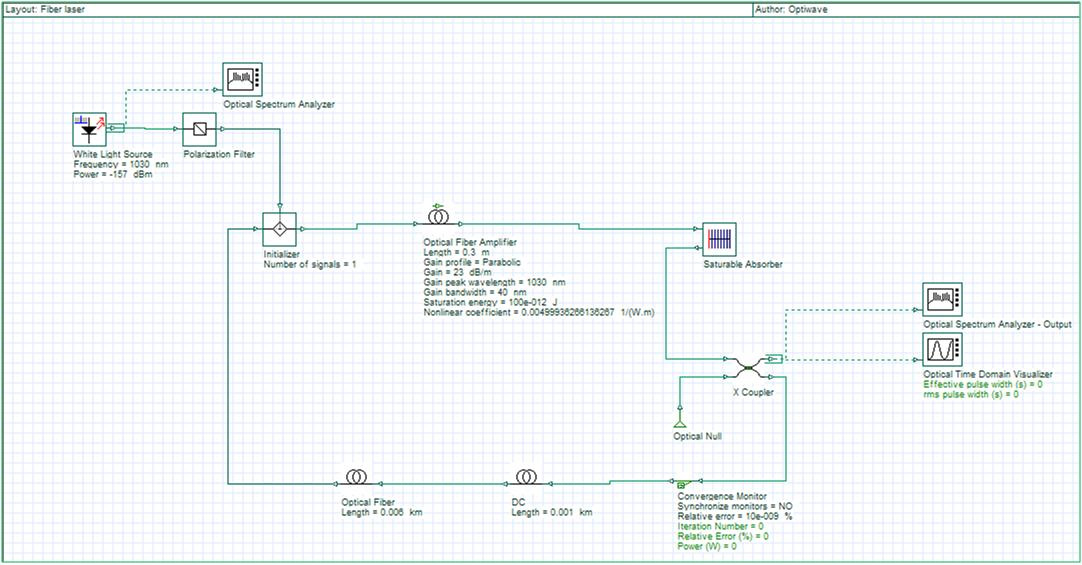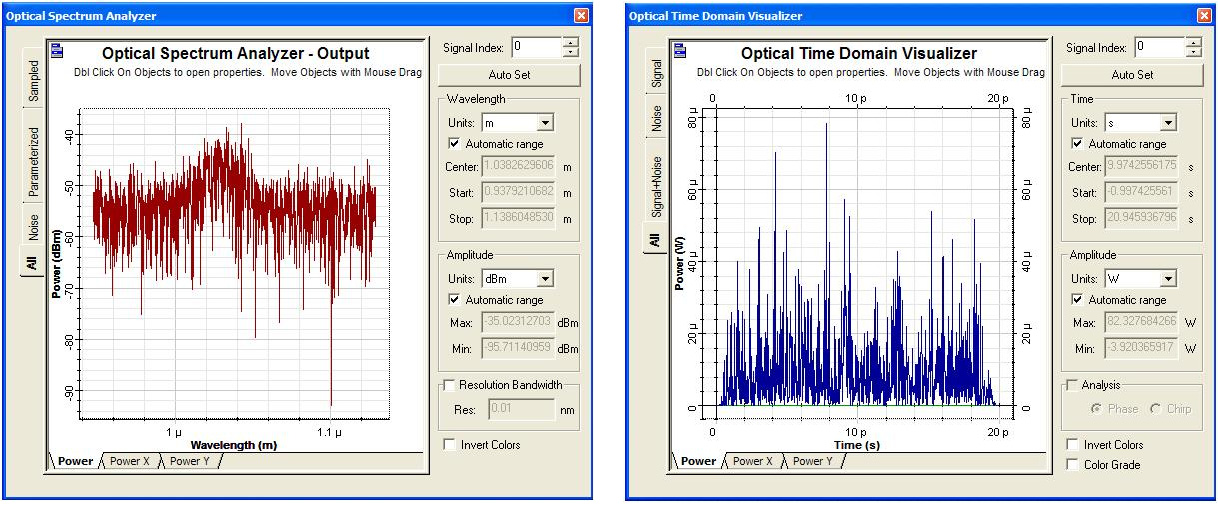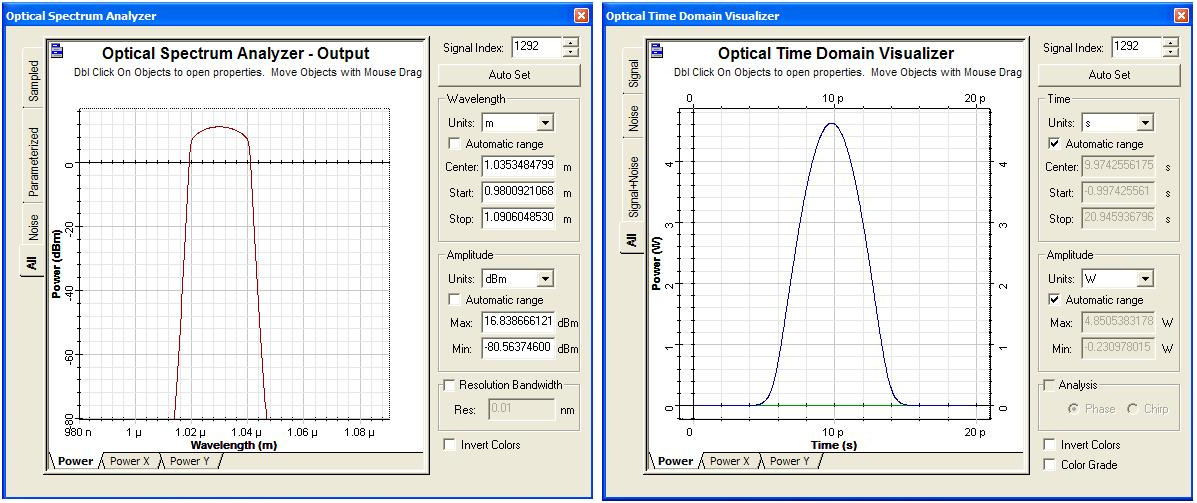The system demonstrates a fiber laser, based on passive mode locking using a saturable absorber, capable of producing ultrashort pulses
Sample: UltraShortFiberlaser.osd
The system layout presented in the figure below is a unidirectional ring cavity composed of an optical fiber amplifier (here represented by a gain fiber numerical modeling that is emulating an ytterbium-doped fiber), an undoped fiber and a DC component that can be varied to change the net cavity dispersion. The saturable absorber is used to achieve mode locking and generate the optical pulse. The white light source provides the noise that initialize the pulse generation.
Figure 1: Ultrashort pulse fiber laser layout.
The system run multiple iterations and the convergence monitor component stops the calculation once the output pulse reaches a stable condition.
Figure 2: Output (a) spectrum and (b) time-domain signal after first iteration
Figure 3: Output (a) spectrum and (b) time-domain signal after convergence in the results (1293 iterations).




